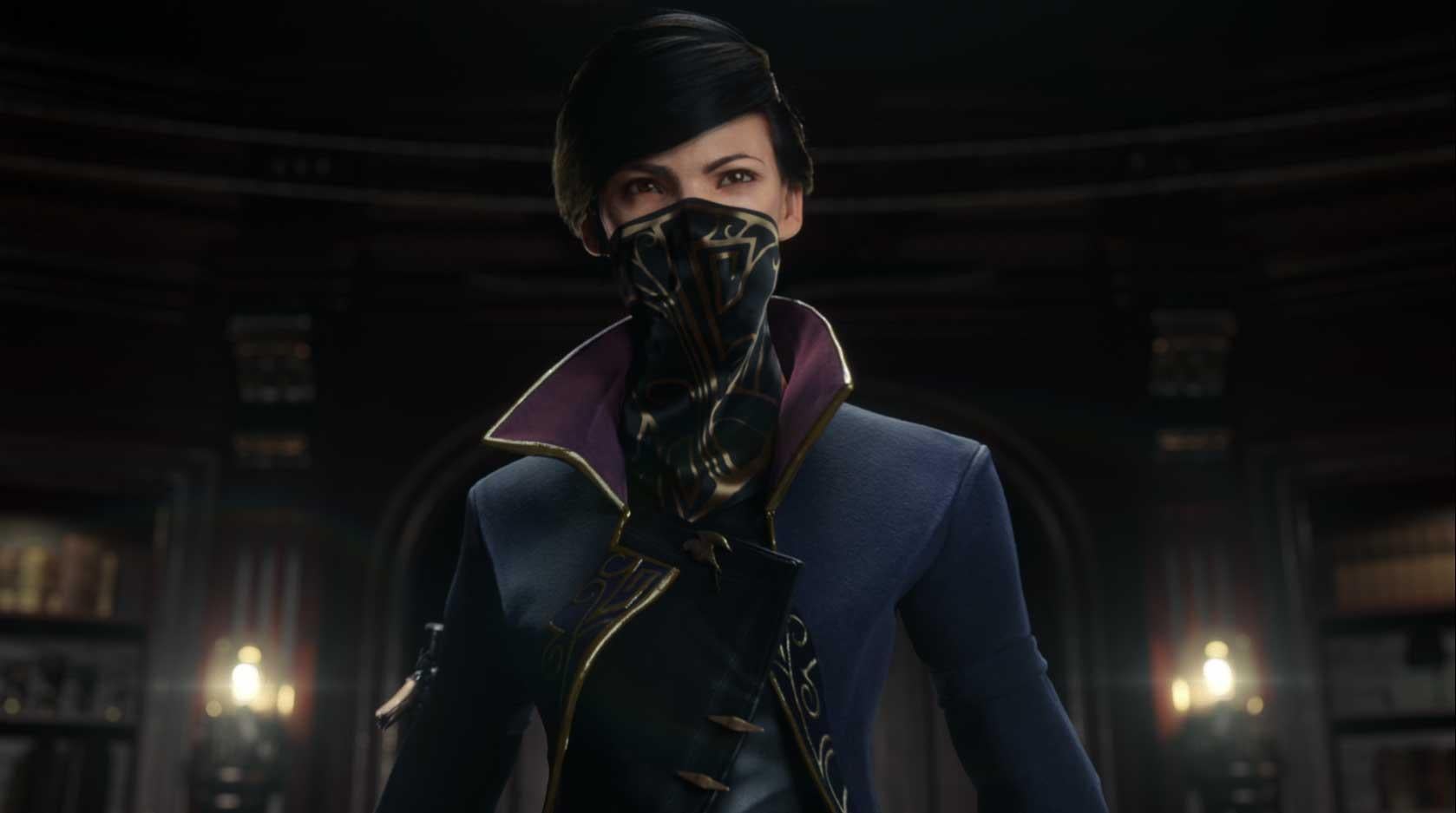Dishonored 2 review: One of the most inventive stealth games ever made
Bethesda - PS4/Xbox One/PC (reviewed) - £49.99

We're slowly learning that history is a cyclical beast - even if the cost of such a lesson feels like too much to bear.
Dunwall has seen 15 years pass since the murder of Empress Jessamine Kaldwin, a trigger for the events of 2012's stealth action-adventure game Dishonored; in which players stalk the shadows as master assassin Corvo Attano, the Empress' bodyguard framed for her murder and hellbent on clearing his name - while ridding his city of its oppressors and putting Jessamine's daughter, Emily, on her rightful place on the throne.
On the very anniversary of Jessamine's death, corruption rears its head once more: Corvo and Emily are wrongfully accused of a series of murders enacted by the notorious 'Crown Killer', with their arrest hailed by the arrival of a mysterious woman who claims to be Jessamine's older half-sister, and thus the true heir to the throne.
Thus commences Dishonored 2: a sequel that plays out largely as an echo of its predecessor and, yet, somehow manages to feel so wildly inventive in the process - a follow-up that can take its place as one of the most memorable, consistently entertaining stealth games of all time. History is cyclical, and so is great gaming it seems.
Immediately, the major change (and sell) here is the option to play either as Emily or as Corvo; practically, there's little discernible difference in how both characters play, but the details of their varying powers and stories feel individual enough to make the replay value soar. Which says a lot for a game that's always triumphed on its own expansiveness of choice.
Corvo's powers are the same as in the first game, albeit with some impressive new upgrades. Emily's are entirely new in concept, though they've been expertly crafted to mirror Corvo's without feeling stale or repetitive. Emily's Far Reach may, essentially, be the same teleport tool as Corvo's Blink; yet, there's a new elegance to the animation - which pulls you across like a magnet - befitting of royal blood.
Her Mesmerize distracts your enemies so you may sneak past, while Domino links their fatal fates, or you can simply create your own Doppelganger; all can be combined in various degrees to deliriously deadly effect. Indeed, it's hard to beat the feeling of having a carefully detailed plan of assault successfully unfold as you simply sit back and watch the ensuing chaos - guards murdering each other in confusion, bottles of alcohol bursting into flame.
And then, there's Emily's Shadow Walk; the most visually fascinating of all of Dishonored's powers, where she's momentarily transformed into a monstrous smoke-being, crawling across the floor to whisp into secret places and creep up on enemies. It's wonderfully sinister.
Dishonored is yet to offer the full open world experience; Karnaca, the coastal city which takes centre stage in the sequel, is still relatively limited in its navigability. That said, there's a significantly more immersive feel here than with the previous game's iteration of Dunwall, which always seemed to guide players along something of a narrow corridor to navigate its set pieces.
Karnaca's expansiveness is felt in its complexity and details - there's a real tactical grace to determining the right way forward for an individual's play style; discreetly slipping in and out of residences and bars through open windows, scuttling across the rooftops or dismantling security measures to move past.
What marks this out as one of the most inventive entries into stealth gaming is how heavily it encourages experimentation in this way; it's one of the few instances where continually dying and reloading saved games actually feels like part of the fun, as opposed to a keyboard-slamming sign of failure. It wants you to feel bold; to see what happens if you push this enemy straight into a glass skylight, if you set an Arc Mine in this entryway.
Where Dishonored 2 particularly excels its predecessor is in finding variation within the Karnaca landscape: from the ever-mutating Clockwork Mansion, the haunting Addermire Station, or the Dust District - where your vision is obscured every five minutes or so.
Dishonored 2 concept art with captions by Sébastien Mitton
Show all 12
There's a sinister air to this city. Dunwall was always marked by its vague steampunk style; there was a jauntiness to it, like a pantomime version of the Victorian slums, all narrow alleyways overshadowed by towering, rickety homes. Karnaca owes more to the faded elegance of decaying colonialism; sadness is embedded in its dusty interiors and peeling wallpaper, it's colder and more barren.
A feeling compounded by the presence of Bloodflies; the parasitic insects building nests within human hosts, living and dead. A far more effective enemy than the first game's army of plague rats, they offer far more of a tactical approach; when do you sneak past? When do you swipe your blade? Which do you simply set on fire?
Rip through your enemies like a murderous thunderclap, or slip by unnoticed by a shadow; Dishonored 2 still holds sacred the forked path of the original game, allowing players to craft any combination of Low Chaos (sneak) or High Chaos (assault) gameplay to navigate their way to their intended goals. With so many further choices and freedoms in sequel, it truly feels like Dishonored's world is now at your fingertips.
Subscribe to Independent Premium to bookmark this article
Want to bookmark your favourite articles and stories to read or reference later? Start your Independent Premium subscription today.

Join our commenting forum
Join thought-provoking conversations, follow other Independent readers and see their replies